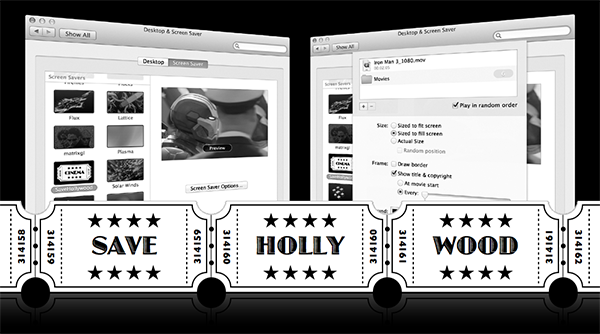

- #SAVEHOLLYWOOD ALTERNATIVES FOR MAC HOW TO#
- #SAVEHOLLYWOOD ALTERNATIVES FOR MAC MAC OS X#
- #SAVEHOLLYWOOD ALTERNATIVES FOR MAC ANDROID#
#SAVEHOLLYWOOD ALTERNATIVES FOR MAC HOW TO#
This is quite easy, here are the steps: How to Make a Screen Saver with Any Pictures on Mac
#SAVEHOLLYWOOD ALTERNATIVES FOR MAC MAC OS X#
You can make a nice screensaver out of a collection of your own images within Mac OS X very easily, the only requirements are having a folder containing the photos you want to use as the screensaver, then configuring the screen saver.

One of the more pleasantly subtle backgrounds to use this with are the image based screensavers like Beach or Forest, or you can create one with your own pictures, the effect is a moving background that pans and uses the “Ken Burns” effect over the images.ĭo you have a collection of images and photos that you’d like to become a screen saver on the Mac? This offers a simple and nice way to customize a screen saver to include only your own images and pictures, and it’s quite easy to accomplish in macOS and Mac OS X. It works in all versions of OS X from the earliest releases of Mac OS X to El Capitan. This trick is a bit of an oldie but goodie, but I still use it from time to time for the eyecandy. Regardless, running a screensaver in the background isn’t a good idea if you’re trying to preserve battery life or you need CPU power for something else. The amount of resources taken up depends on the screen saver itself, and the size of the displays where the screen saver is being rendered on, as well as the Mac itself. Most screensavers won’t use too much CPU, in testing they generally run between 4-12% although Arabesque spiked as high as 40% at times.
#SAVEHOLLYWOOD ALTERNATIVES FOR MAC ANDROID#
This ends up giving your Mac an effect similar to Android OS’s living wallpapers (you can get living wallpapers on iPhone too but you have to jailbreak). The screensaver will take a few seconds and load as the desktop wallpaper. Although if you want, you can set the process to run on it’s own by adding an ampersand (&) to the end of the last command too, but then to stop the process you’d need to target it with Activity Monitor or the kill command. Stopping the screensaver is just a matter of hitting Control+Z, or closing the active terminal window. If you split the command into two, there is a period before the second part, so don’t miss that. If you’re having issues copying and pasting the above text, you can split it into two commands. If you’re on MacOS High Sierra or later, the command syntax must be modified slightly as so to run the Mac screensaver as wallpaper, like so:Īlso, recall that the above commands need to be on a single line in order to execute properly. Having trouble with the above syntax working? Make sure your syntax is correct, and that you’re using the proper syntax for each MacOS version. If you close the Terminal window, the screen saver will end and your Macs wallpaper will return to whatever you had previously. Hit the Return key to execute the command string, this will start the screen saver in the background immediately.Īs long as this command is running, the screen saver will be active.

Using a Terminal command, you can turn any screensaver into your background wallpaper on the Mac.


 0 kommentar(er)
0 kommentar(er)
